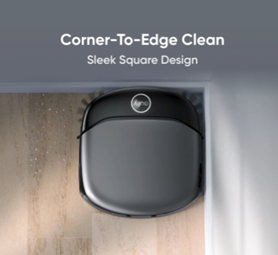Vacuum cleaners work tirelessly to keep our homes clean, but even the best models eventually reach the end of their useful life. Many homeowners struggle to determine when their vacuum has crossed the line from needing repairs to requiring replacement. Continuing to use a failing vacuum not only delivers poor cleaning results but can actually spread more dirt around your home. Recognizing the warning signs of a dying vacuum helps you avoid wasting money on ineffective repairs and ensures your home gets the thorough cleaning it deserves. In this article, we'll examine the key indicators that your vacuum has reached retirement age and needs to be replaced.

1. Loss of Suction (Even After Maintenance)
A noticeable decline in suction power is often the first and most obvious sign your vacuum is failing. When you've replaced filters, cleared all clogs, and checked for blockages but the suction remains weak, internal components may be worn beyond repair. The motor brushes could be worn down, the impeller might be damaged, or the vacuum's seals may have deteriorated. If your vacuum no longer picks up debris it once handled easily - especially on carpets where strong suction matters most - it's likely approaching the end of its lifespan. Test your vacuum's suction by placing your hand over the hose opening; if you can barely feel air movement even at maximum power, replacement should be considered. Another telltale sign is when you repeatedly need to go over the same spot multiple times to achieve basic cleanliness.
2. Strange Noises & Burning Smells
Unusual sounds and odors from your vacuum indicate serious mechanical issues that often warrant replacement. A high-pitched whining noise suggests motor bearing failure, while grinding sounds may indicate broken internal components. Rattling noises often mean loose parts inside the vacuum that could break completely during operation. Burning smells, even faint ones, signal electrical problems or overheating that could become safety hazards. These symptoms frequently appear after years of use when internal components have worn down from normal operation. While some noises can be fixed by replacing specific parts, the repair costs often approach the price of a new vacuum, making replacement the more practical choice. Persistent odors after thorough cleaning may indicate mold growth inside the vacuum that's nearly impossible to completely eliminate.

3. Frequent Breakdowns & Repairs
When your vacuum requires constant attention and repairs, it's likely time for replacement. If you're visiting the repair shop more than once a year or constantly ordering replacement parts online, your vacuum has entered a costly cycle of diminishing returns. Consider the 50% rule: if repair costs exceed half the price of a comparable new model, replacement makes better financial sense. Frequent belt replacements, motor issues, or electrical problems suggest systemic failure rather than isolated incidents. Older vacuums also become harder to repair as manufacturers phase out replacement parts, leaving you with an irreparable machine when the next component fails.
4. Visible Wear & Tear
Physical deterioration provides clear visual cues that your vacuum needs replacing. Cracked housings or broken attachments compromise functionality and can even create safety hazards. Worn-out brush rolls with missing bristles won't effectively clean carpets, while frayed power cords present electrical dangers. Plastic parts often become brittle with age, breaking during normal use. Check the wheels - if they're worn unevenly or don't rotate smoothly, your vacuum won't maneuver properly. Discoloration or warping of internal components indicates heat damage from years of use. While some cosmetic wear is normal, extensive physical damage affecting performance means your vacuum has served its purpose and needs retirement.
5. Outdated Technology & Efficiency
Vacuum technology has advanced significantly in recent years, making older models obsolete in several ways. If your vacuum lacks modern features like HEPA filtration (essential for allergy sufferers), adjustable suction settings, or swivel steering, you're working harder than necessary to clean your home. Older vacuums often consume more energy while delivering inferior performance compared to new energy-efficient models. Consider how much time you spend cleaning with your current vacuum - newer models can often cut cleaning time significantly through improved design and technology. If you're still using a vacuum purchased a decade or more ago, you're likely missing out on innovations that make cleaning easier and more effective.
6. Battery Degradation (Cordless Models)
Cordless vacuum owners face unique signs of aging primarily related to battery performance. When your vacuum's runtime has decreased to less than half its original duration even after proper charging, the battery has likely reached its end of life. Some models allow battery replacement, but if the cost approaches 40% of a new vacuum's price, replacement makes more sense. Other signs include the vacuum losing power suddenly during use or taking significantly longer to charge. Lithium-ion batteries typically last 2-3 years with regular use before noticeable degradation occurs. If your cordless vacuum struggles to complete a single room on a full charge or the battery gets unusually hot during use, it's time to consider replacement.
Conclusion
Understanding how long do vacuum cleaners last helps set realistic expectations (typically 5-8 years for most models). When selecting a replacement, prioritize features matching your specific needs: HEPA filtration for allergy sufferers, strong suction for pet owners, or lightweight design for multi-level homes. For those who want to maintain their floors between vacuuming sessions, robotic vacuums like those from eufy offer convenient daily maintenance. Remember that investing in a quality vacuum suited to your home's needs will pay dividends in cleaning performance and longevity, ultimately saving you money and frustration in the long run.








